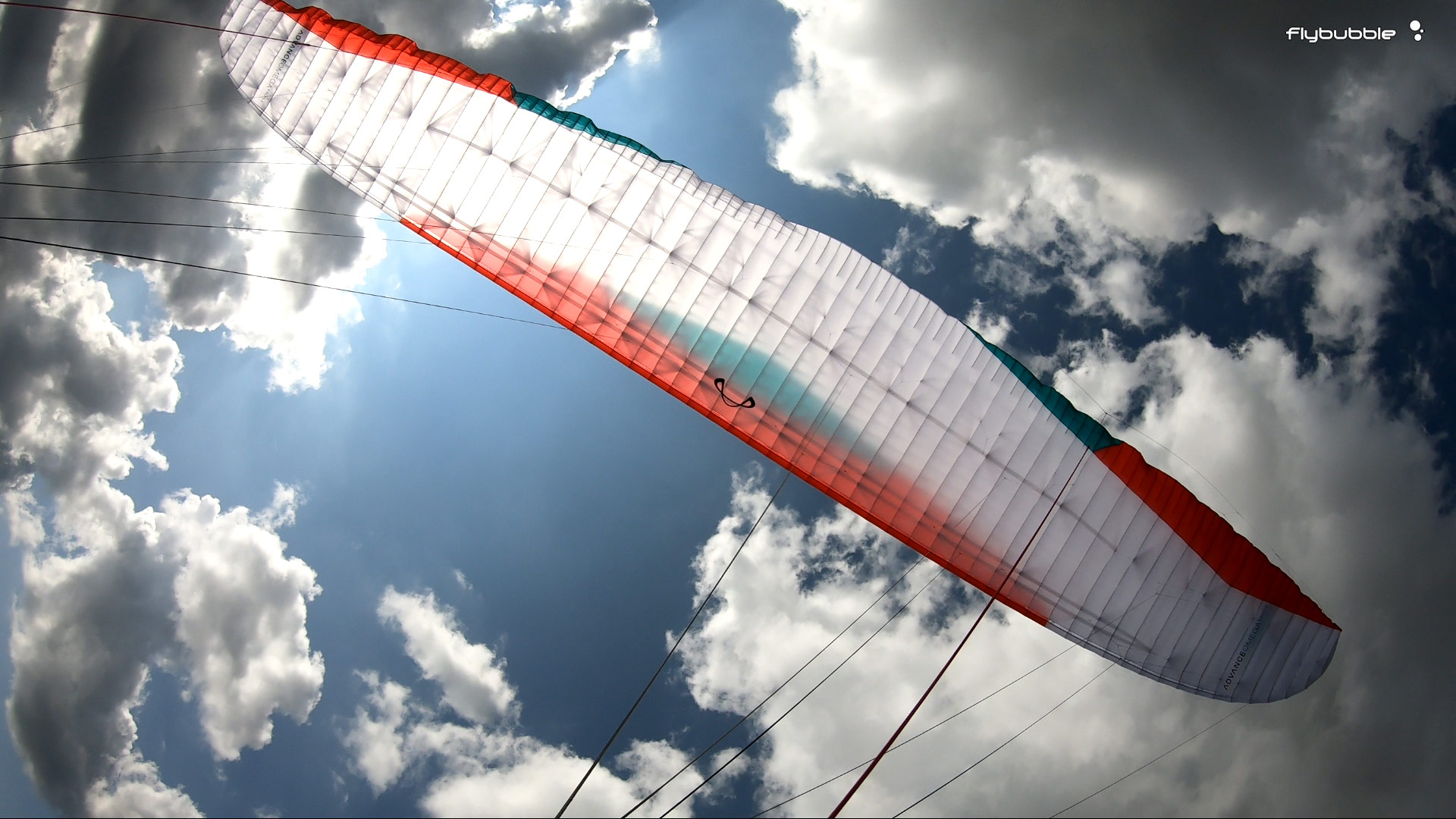
I’ve been reviewing wings for over twenty five years and I’ve tested hundreds of wings. Occasionally, something stands out from the crowd, and I take it on as my personal wing. I buy my own wings at the same price I’d pay for any other brand, so there’s no affect on my impartiality. I try to remain objective and put myself in the position of the pilot for whom the wing is intended before making my analysis. I have to raise my hand and tell the truth at the beginning of this review: I think my objectivity has been compromised. I love the Omega XALPS 3!
Part of this is because I’m into hike and fly, volbiv and I’m secretly training for a certain race in the Pyrenees so I’m assembling my perfect ultralight kit. I like wings that are fast, I like wings that are solid, and I like the feeling of high performance. The XALPS 3 delivers what I need.
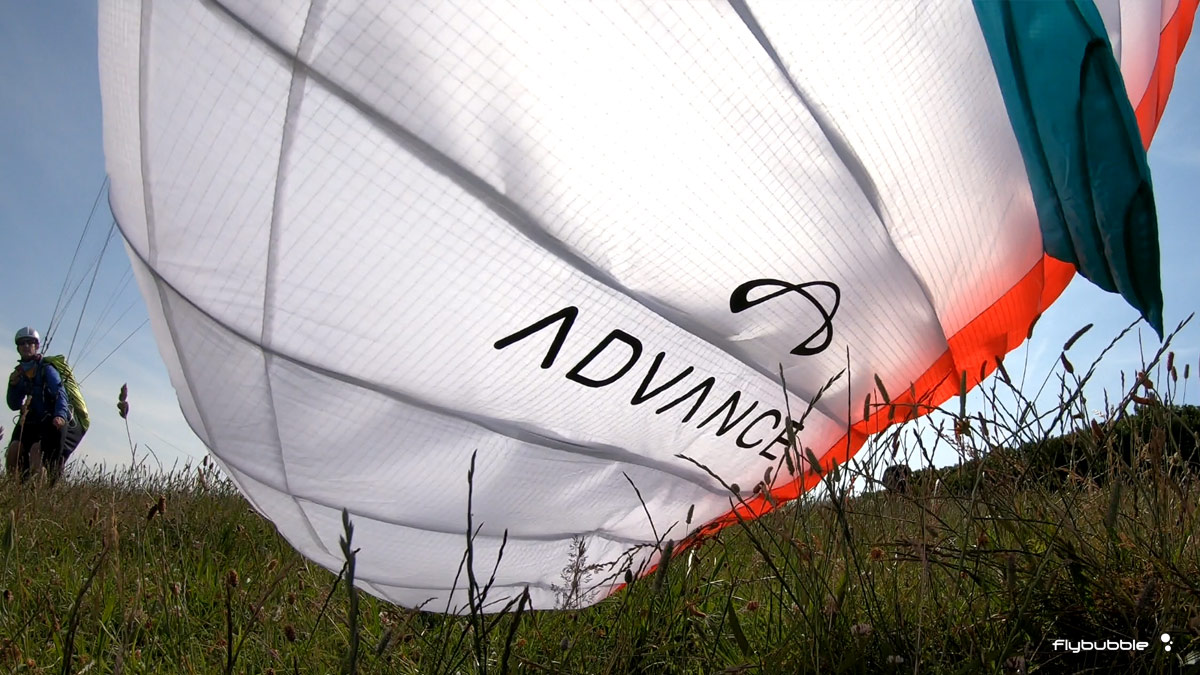
But a large part of my love for the wing is due to the exceptional technical achievement this wing represents and its outstanding flying nature. We have waited for years and years for ‘the 2 liner from Advance’. While the rest of the industry flew into the stiff headwind of competition-racing, Advance kept working on their prototypes.
And then, in a challenging move, they incorporated all the research into the ultralight wing for the Redbull X-Alps race. Two-liner tech is usually reserved for heavier full-blown competition wings.
Well, Advance fans: it’s here. Featuring a minimal line set, simple risers with carbon fibre handles, and those tiny trademark winglets, this is a 2 liner with a flat aspect ratio of 6.95 that weighs only 3.5kg!
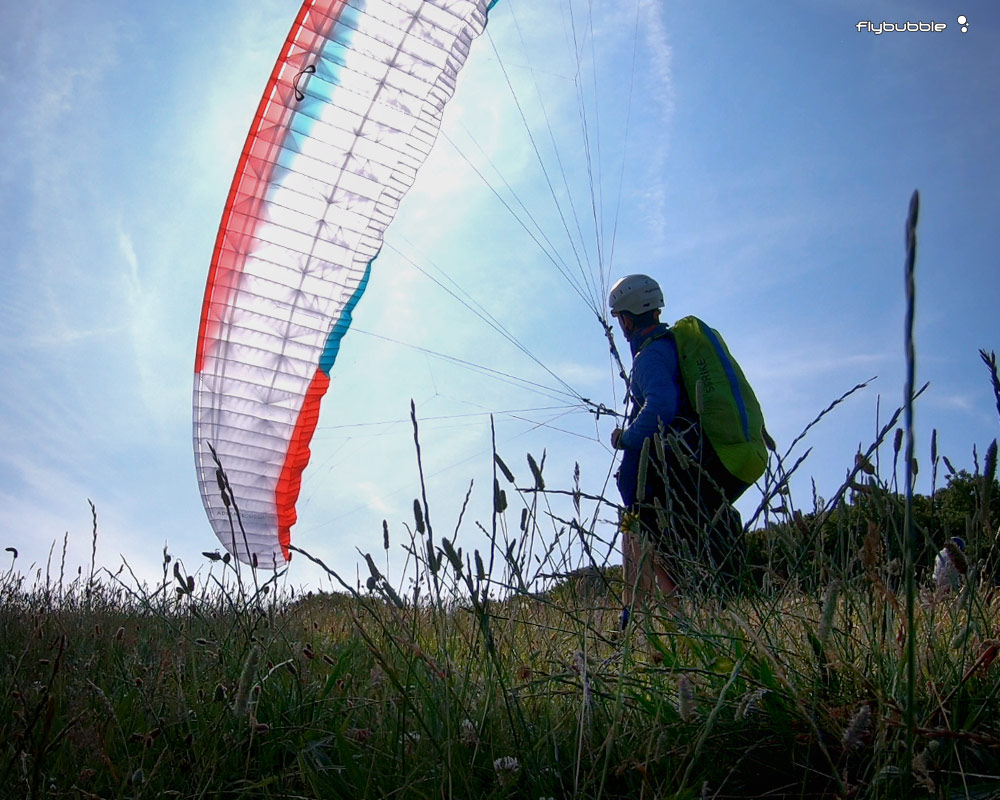
That would have been enough, but Advance has worked on this wing to make it shine. You can tell on the ground that it is exceptional. What other two-liner can you float up from low angles in light wind, put on a tip and bring back on the brakes, start from a ball, and play around on the slope with? It is an absolute pleasure to handle on the ground, with the only slightly demanding characteristic being the tendency to shoot ahead when coming up. The tolerance for deep brakes makes this easy to catch, and it offers an explosive start from a tight spot, if you want it.
In moderate wind it is hard to keep at a low angle in a semi-stall; it dances back to life. In strong wind it has the simplicity of the XALPS 1. You can just lean back, let it pop up, and dampen it on the rear risers.
Advance OMEGA XALPS 3: Construction
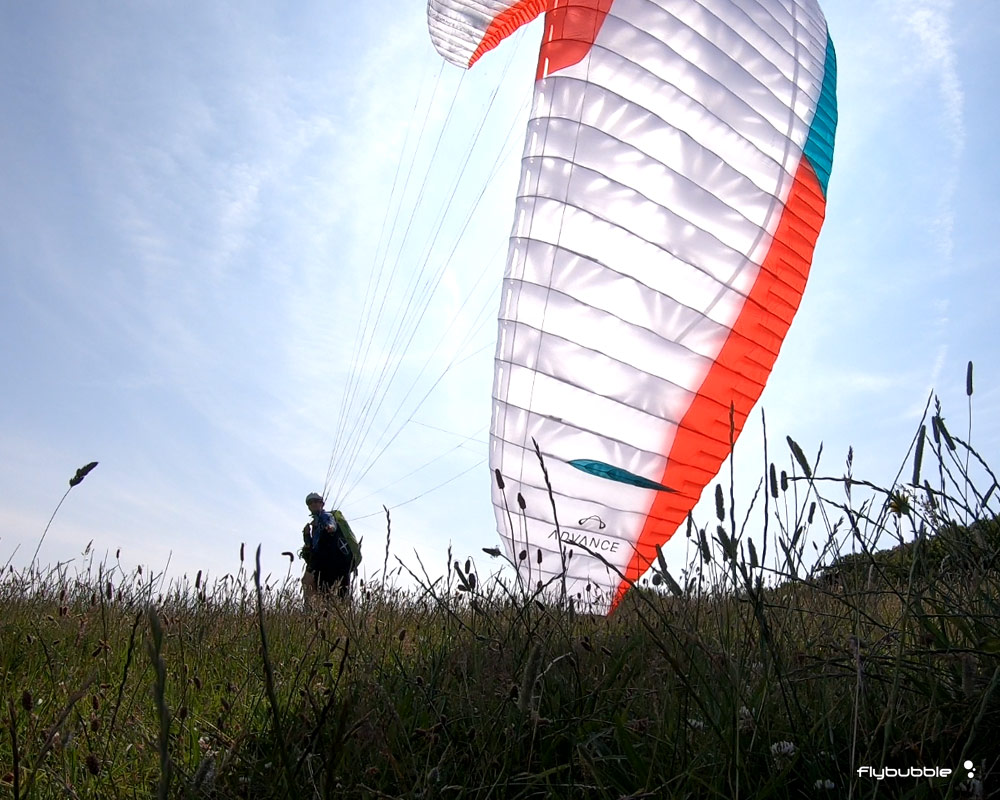
Earlier XALPS wings had very short reinforcing rods which made packing simple. I was surprised to see long Nitinol wires in the XALPS 3 – they run the entire length of the chord, on every cell! Longer than any wing I’ve handled to date. They are thin and very flexible, but there is no way to fold this wing without bending the wires.
When packing away, I prefer to fold my wing to a narrow pancake and wrap the wing around my harness to increase the curvature, but I’ve seen Chrigel Maurer and Patrick von Kanel throw down wings that look as if they’ve been ironed in a military press, so I expect the Nitinol will withstand tight packing. Advance says “The material is extremely light, durable and its properties allow a wide range of packing methods and smallest packing volumes.”
The lines are unsheathed, and easy to untangle because there are so few of them. “The Aramid lines on the OMEGA XALPS 3 are considerably stronger than conventional covered lines” says Advance. This is because a covered line uses some of its diameter in weak sheating covering, so the strength-bearing inner core is a narrower diameter than the unsheathed Aramid. I’ve seen Advance wings in action over the years, and I’m confident their materials choices are top notch.
The brakes (secured by poppers) might disappoint recreational XC pilots, as they are really minimalistic, but that’s a simple thing to change if you wanted more comfort in the hand.
Advance OMEGA XALPS 3: In the air
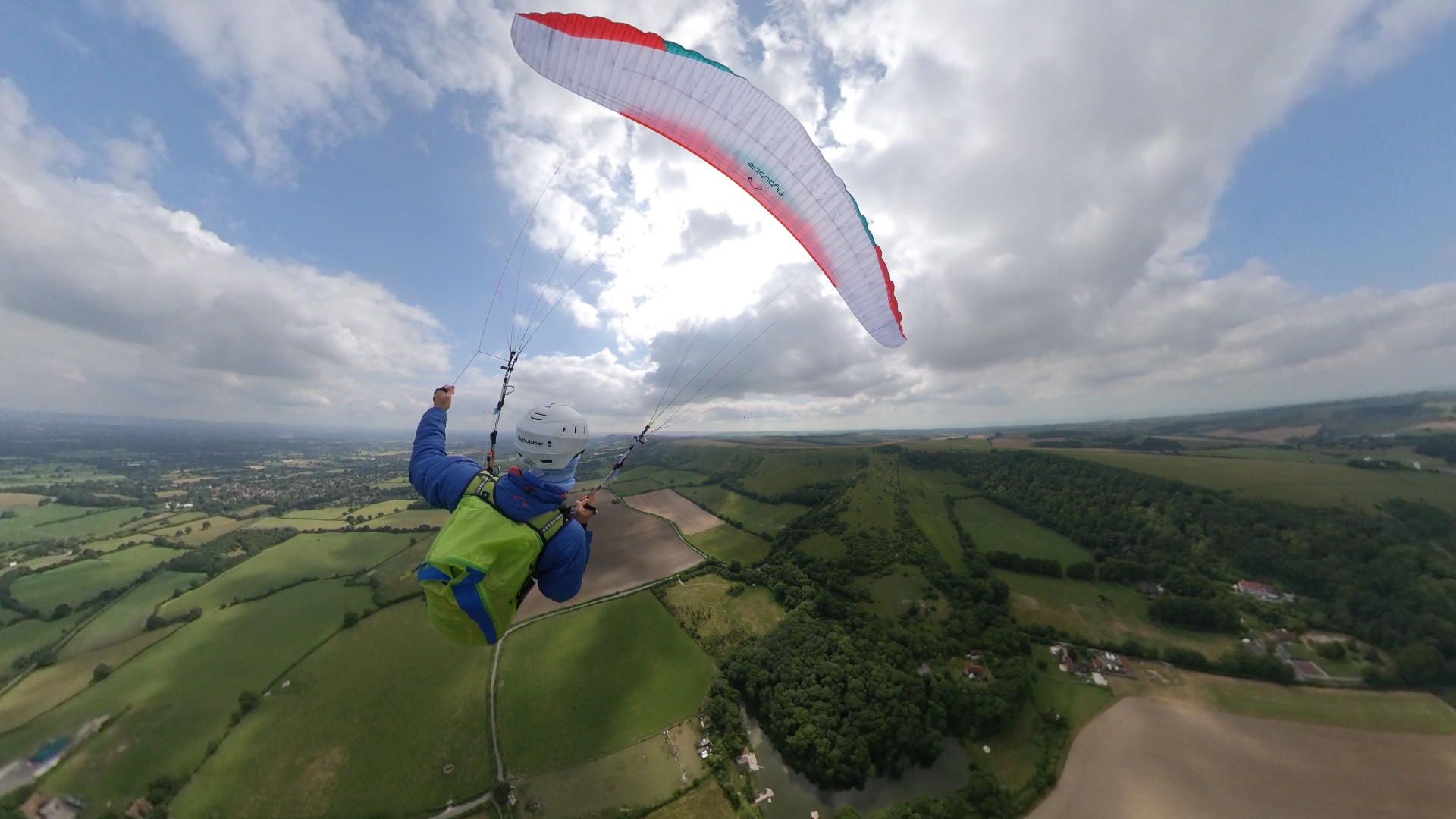
I normally fly the Advance Sigma 10, which I chose for its agility and precision in the thermaling turn. At first, the XALPS 3 felt stiff and a bit sedate to me. It resists instant direction changes and stays fairly flat in the turn. The brake pressure to get big responses is high.
As I dialled into the wing the handling improved. It is fairly agile and will respond with small inputs, but it has a steadiness that is reminiscent of the XALPS 1 and the OMEGA 8.
As Advance says “The OMEGA XALPS 3 itself maintains your chosen turn radius with a steady turn application – without needing tiresome circling corrections. Angle of bank can always be adjusted by brake position and load.”
It is very pitch stable and I did not need to control surges, except for gently reigning back the tips at times during thermaling.
Big ears are simple to engage with a strong pull. They flap around a bit, and sometimes the brake line can hook over the trailing edge, requiring a solid pump or refolding to clear.
Advance OMEGA XALPS 3: At speed
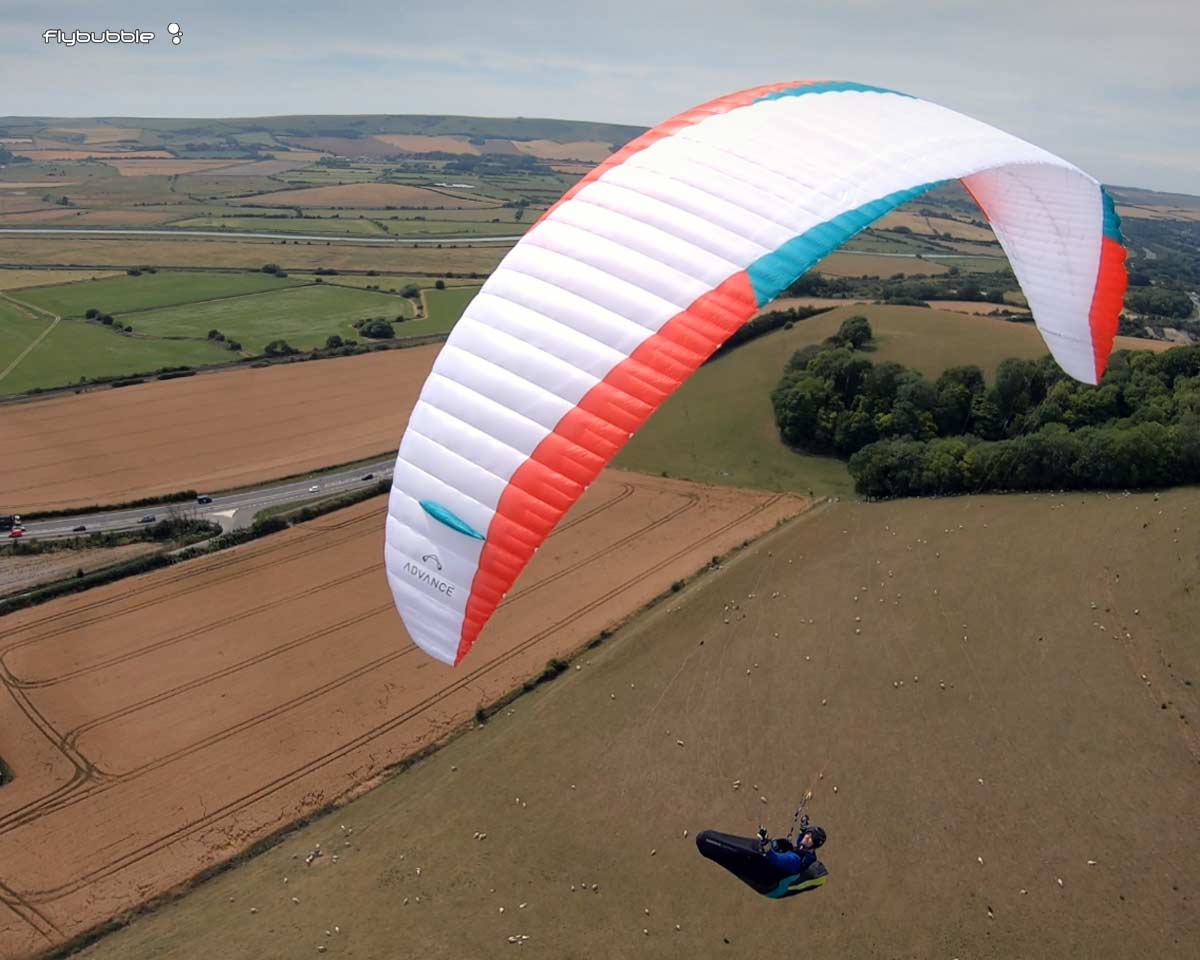
Due to the incredibly stability of the wing (for an EN D), it invites you to fly at zero brake position, with your hands on the rear risers, so small corrections are made by altering the angle of attack rather than by dragging on the trailing edge. This alone will increase your performance through a long day of XC flying. You tend to fly fast, and maintain good glide.
You’re also already in position to accelerate, so I found myself using the bar often. A short press to half bar gets a noticeable increase in speed and like most two-liners, it begins to feel even more resistant to turbulence.
Going to full bar generates that ‘ice wind’ that I remember from my Icepeak 6, the first time I flew a wing that legitimately nears 60km/h on full taps. It made me laugh out loud with delight. It’s definitely ‘a class above’ the Sigma. I expect the XALPS is slightly less than 60 at sea level but it’s ‘proper fast’ in my estimation. You won’t keep up with a heavy comp pilot on a large Enzo 3 but you’ll come close.
I don’t use full bar for races-to-goal. I use it for safety, to get out of big mountains when the day has turned mental, or to position myself over the least scary field on a windy outlanding. I want speed and stability, and the XALPS 3 gives me that.
2 liner vs 3 liner – what’s the fuss?
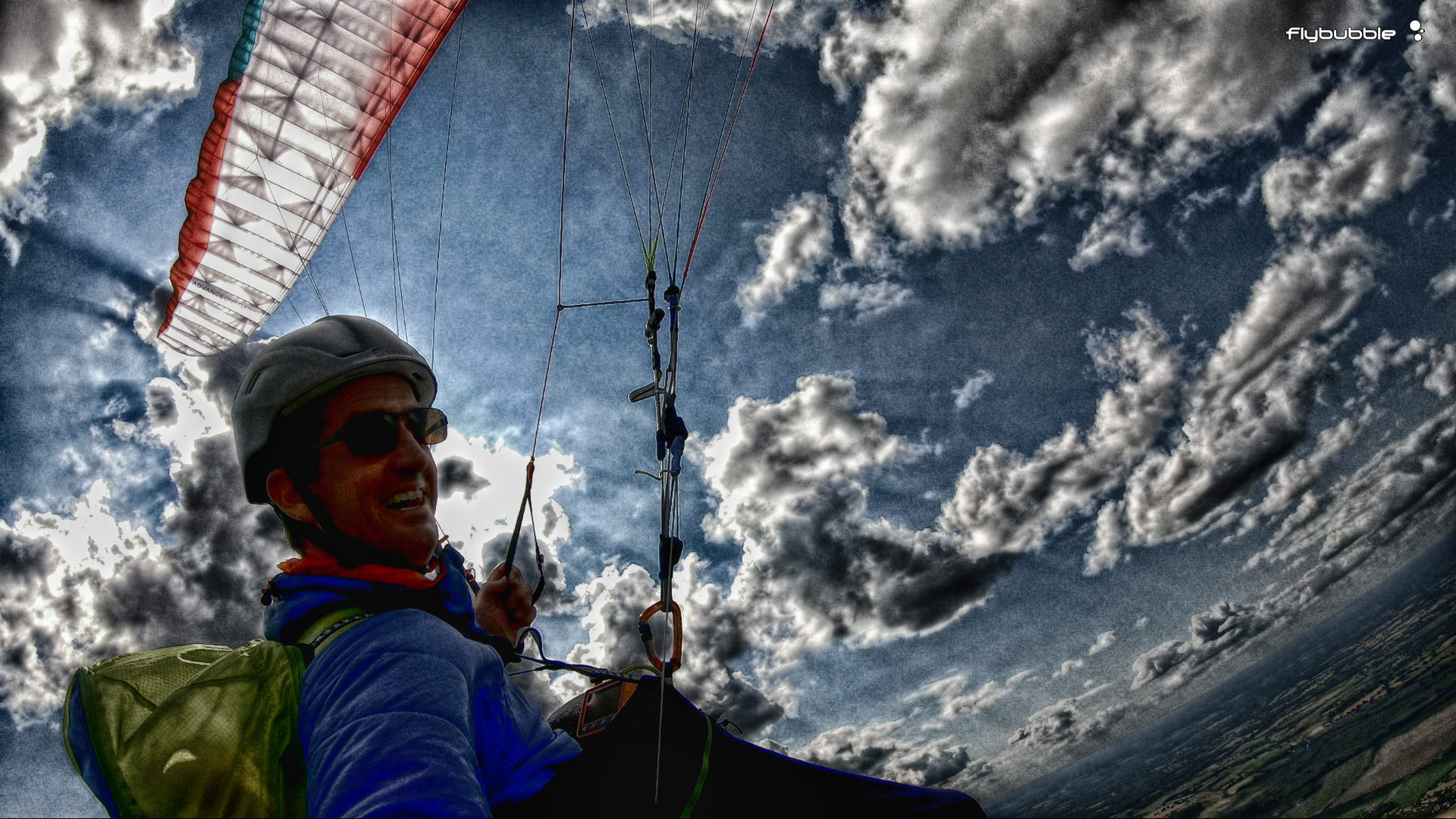
A 2-liner offers more speed and glide (due to fewer lines). It gives you great contact with the wing through the rear risers when flying accelerated. And it enhances collapse resistance. I’m not talking about tip tucks, which still require active control on the XALPS 3. I’m talking about the body of the wing, and the way it powers through unsettled air. I’m no aerodynamicist but I’ve heard that when your weight is suspended further back from the leading edge you get an inherent stability, kind of like sitting near the middle of a seesaw. The 3 liner usually wants to fold when a gust pushes down on the leading edge and the lines unload. The 2 liners I’ve flown seem to hold on, they keep flying for a second longer, which is often all you need until the airflow returns to normal. In practice I’ve found far fewer big collapses on a 2 liner. Instead, the wing flexes to dissipate excess energy.
If the turbulence is severe enough to make a 2 liner blow out, you can bet it would also ball up a 3 liner. Which one will recover cleaner and faster is a moot point, because at this level pilot input plays a large role, and I’m confident I will get the 2 liner flying again just as fast. The risk of cravatte relates more to the aspect ratio of the wing.
Some of the ‘scary reputation’ of 2 liners is caused by pilots who do not have the training or skills to handle them. If you’re wary of this demanding class of wings, the XALPS 3 is certainly the easiest step into the class, but you do need solid SIV skills to be properly prepared for the power. Pilots coming up from a 3 liner need to learn to control this wing on the back risers rather than trying to catch movements on the brakes.
Advance advises “To fully master an OMEGA XALPS 3 a pilot must already have experience of high performance wings in a typical variety of atmospheric conditions. An OMEGA XALPS 3 pilot must be capable of a very active flying technique, and fly frequently. Only then will the full performance potential of this paraglider be achieved, and the pilot will be able to go on his cross country way safely, in a relaxed frame of mind.”
It might be better to SIV your current 3 liner, instead of taking your brand new XALPS 3 to the lake. ADVANCE strongly advises against simulated front and side collapses. If an OMEGA XALPS 3 is subjected to a simulated front or side collapse without folding lines (as applies to all EN/LTF-D paragliders certified with folding lines) the line of fold or break (collapse) will be decided deeper than required for the test, and the resulting recovery will be very impulsive and aggressive.
Thankfully, you can get a good idea of the behaviour on Jack Pimblett’s video
Advance OMEGA XALPS 3: Who is it for?
I can’t help but imagine the smile on Chrigel’s face when he got this wing during preparation for the Xalps (which he won, again). It is made for day-in-day-out XC flying, taking on random ‘off-piste’ launch sites and flying in everything from big air to light slope soaring. It is the ultimate multi-tool for experienced pilots, giving you an ultralight, high performance, reliable wing you can take everywhere.
Like previous OMEGA XALPS wings, it doesn’t seem to be ‘too light’. Advance have very high standards when it comes to products that are ‘ready for market’. The XALPS 3 is suitable for XC league regulars and experienced pilots who will take care of the wing by launching proficiently.
If you’re coming from another EN D you’ll have no problems adapting to the XALPS 3. If you’re upgrading to the class from a high C, or looking to fly a two-liner for the first time: this will help you with the best in class launch behaviour and the ease of handling and good reinflation characteristics that comes from light manufacture. It’s not demanding. It has forgiving and balanced behaviour in thermic air. It will give you the confidence to fly fast and far, with a broad smile on your face.
It makes me want to sneak out and fly, and for that, I love it.
Find out more about the Advance OMEGA XALPS 3
Advance OMEGA XALPS 3: Review video
Join us as we scrutinise the Flybubble demo on a windy thermic day.
Brought to you by Flybubble
Like what we do? The best way to thank and support us is to buy gear from us and recommend us to others. Thank you!
